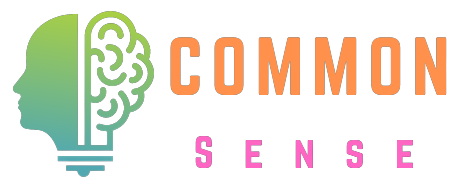
First Aid Basics
I. Understanding the Importance of First Aid
First aid is the initial assistance or treatment given to someone who has been injured or suddenly taken ill before professional medical help arrives. It plays a crucial role in stabilizing the patient's condition, preventing further injury or harm, and promoting recovery. By administering timely first aid, bystanders can significantly improve the outcome for the injured person and increase their chances of survival.
II. Key First Aid Techniques and Procedures
1. Assessing the Situation: The first step in any emergency situation is to assess the scene for potential hazards and ensure your safety before approaching the victim. Look for dangers such as traffic, fire, or unstable structures, and take appropriate precautions to prevent further harm.
2. Checking for Responsiveness: Gently tap the victim and ask if they're okay. If there's no response, shout for help and begin the next steps of assessment and treatment.
3. Calling for Help: In situations where the victim requires medical attention beyond basic first aid, call emergency services immediately. Provide clear and concise information about the location, nature of the emergency, and the number of individuals involved.
4. Performing CPR (Cardiopulmonary Resuscitation): If the victim is unresponsive and not breathing normally, initiate CPR by performing chest compressions and rescue breaths. Follow the standard CPR guidelines, aiming for a compression rate of 100-120 compressions per minute and ensuring adequate chest rise with each breath.
5. Managing Bleeding: Control bleeding by applying direct pressure to the wound with a clean cloth or bandage. Elevate the injured limb above the level of the heart, if possible, and continue applying pressure until the bleeding stops or professional help arrives.
6. Treating Burns: For minor burns, run cool water over the affected area for several minutes to soothe the skin and alleviate pain. Cover the burn with a sterile dressing or clean cloth to protect it from infection. Seek medical attention for severe burns or burns covering a large area of the body.
7. Dealing with Fractures and Sprains: Immobilize the injured limb using a splint or improvised materials to prevent further movement and minimize pain. Apply ice packs or cold compresses to reduce swelling and inflammation, and seek medical evaluation for proper diagnosis and treatment.
8. Managing Choking: If a person is choking and unable to breathe or speak, perform abdominal thrusts (Heimlich maneuver) to dislodge the obstruction from the airway. Stand behind the victim, wrap your arms around their waist, and deliver upward thrusts to the abdomen until the object is expelled.
9. Administering First Aid for Specific Injuries: Familiarize yourself with the appropriate first aid procedures for common injuries such as cuts, bruises, insect bites, allergic reactions, and heat-related illnesses. Carry a first aid kit containing essential supplies to address a wide range of medical emergencies.
10. Providing Emotional Support: In addition to physical care, offer reassurance and emotional support to the injured person and those present at the scene. Stay calm, empathetic, and attentive, and encourage others to remain calm and cooperative during the crisis.

Conclusion
Being prepared to administer first aid basics can make a significant difference in the outcome of an emergency situation. By learning and practicing essential first aid techniques, you can become a valuable asset in your community and help save lives when every second counts. Remember, quick thinking, effective communication, and confidence are key components of successful first aid intervention. Stay informed, stay prepared, and empower yourself to respond effectively to emergencies with compassion and competence.
FAQ
Ques 1: What should I do if I'm not trained in first aid and encounter an emergency?
Ans: If you're not trained in first aid, your priority should be to call emergency services immediately. While waiting for help to arrive, provide any assistance you feel comfortable with, such as comforting the injured person, ensuring their safety, or following basic first aid instructions given by emergency dispatchers.
Ques 2: What are the essential items to include in a basic first aid kit?
Ans: A basic first aid kit should contain adhesive bandages, sterile gauze pads, adhesive tape, antiseptic wipes, scissors, tweezers, disposable gloves, a CPR face shield, instant cold packs, and a first aid manual. Customize your kit based on your specific needs and activities.
Ques 3: How can I stay calm and focused during a first aid situation?
Ans: Take deep breaths to calm your nerves, focus on the task at hand, and remind yourself of the importance of your actions in helping the injured person. Trust your training (if applicable) or follow basic first aid principles, and seek assistance from others if needed.
Ques 4: What should I do if someone refuses my help or first aid assistance?
Ans: Respect the individual's autonomy and decision-making capacity. Offer reassurance and encourage them to seek medical attention if they change their mind or their condition worsens. However, if the person is incapacitated or in a life-threatening situation, you may need to act in their best interest to provide assistance.
Ques 5: How often should I renew my first aid certification, and where can I receive training?
Ans: It's recommended to renew your first aid certification every 2-3 years to stay updated on the latest techniques and protocols. You can receive first aid training from certified organizations such as the Red Cross, local hospitals, community centers, or online platforms offering accredited courses.







Do Leave Your Comment